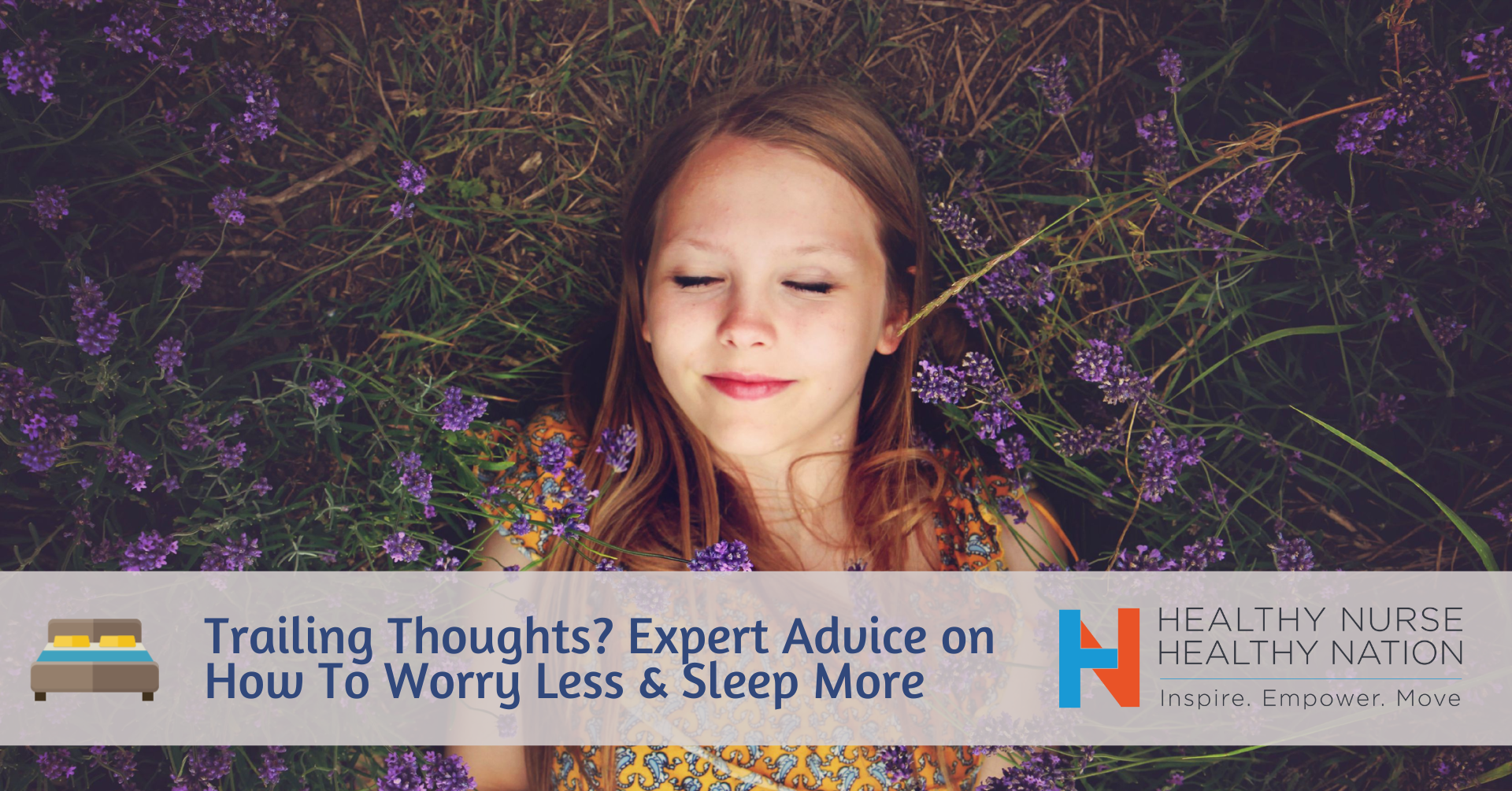Healthy Nurse, Healthy Nation™ Blog - Trailing Thoughts? Expert Advice On How To Worry Less And Sleep More
Published
“Be kind, for everyone you meet is fighting a battle you know nothing about.” – Wendy Mass
Not only are our “battles” challenging while we’re awake, but they can also disrupt our sleep. Americans continue to lose precious sleep due to daily struggles. The daily struggles of nurses across the country are compounded even further with the pandemic. They have dealt with unprecedented stress levels these past 2+ years. Recent research shows that during the first 6 months of the COVID-19 pandemic, over half of nurses had problems sleeping.
That same study found that nearly a quarter of nurses reported being depressed, and 52% reported anxiety. A big contributing factor: Difficulty sleeping.
What are nurses losing sleep over? In addition to the common challenges everyone faces (like saving enough money for retirement or dealing with difficult relationships), nurses are dealing with:
- Burnout
- Exhausting long shifts
- Insufficient wages
- Workplace violence, incivility, and bullying
- Staff shortages and unreasonable work loads
- Trauma from sicker patients and more deaths
- Unsafe working environments
There’s a clear-cut relationship between sleep and mental health. Getting enough sleep fosters mental and emotional resiliency — something all nurses rely on to put one foot in front of the other, especially these days. So, when worries and anxiety keep you from getting quality sleep, try some of these techniques to keep trailing thoughts at bay:
Do Relaxation Exercises
Focus on ways to lower your heart rate, relax your muscles, and slow your breathing. You can try these exercises on your own or through a guided meditation. The Sleep Foundation recommends the following relaxation exercises:
- Diaphragmatic breathing: This form of belly breathing engages the large muscle at the base of your lungs. It’s perfect for reducing stress and increasing relaxation.
- 4-7-8 breathing: This method helps you relax by focusing on the speed of your breathing. Inhale for 4 counts, hold for 7, and exhale for 8. You’ll find more detail on the Sleep Foundation’s website so you can practice for a few minutes before going to sleep.
- Body scans: This exercise helps you to gradually release tension in different areas of your body until every major area is relaxed. You relax by bringing your attention to different body parts, noticing if you are tense there — and if you are, releasing the tensions.
- Progressive muscle relaxation: This exercise has you deliberately tense and relax 16 different muscle groups, one at a time. The result is a fully relaxed body with no tension.
Find What Calms You
Everyone has something that gives them a sense of peace and relaxation. What is it for you? Maybe it’s subtle nature sounds, like birds chirping or a creek rippling. If that’s the case, turn on a sound machine or use a sound app. Maybe it’s your favorite music, or a book you can get lost in. Whatever it is, incorporate it into your bedtime routine. Spend a few minutes with what calms you, so you begin to associate bedtime with peacefulness.
Try Journaling
For many people, writing their thoughts down on paper helps get those thoughts out of their heads. Journaling can provide a sense of relief, like a weight has been lifted from your shoulders. It’s a great activity for:
- Reducing stress
- Processing difficult emotions
- Stimulating personal growth
- Promoting calm and peace
- Improving anxiety symptoms
- Increasing cognitive function
Before you go to bed, grab a pen and paper, then write down what’s on your mind. What’s worrying or bothering you? What do you need to remember to do tomorrow? What do you hope to do better tomorrow compared to today?
Think of this activity as the literal emptying of your thoughts from your brain onto a piece of paper. Leave them there before you get into bed — don’t take them with you.
Turn to Meditation
Meditation is a fantastic way to clear the mind in a short amount of time. One study found that even a single session of mindfulness meditation can reduce anxiety.
As part of your bedtime routine, consider using guided meditations with videos or an app. There are many guided meditations available online— and there’s usually something for everyone.
Know When to Seek Help
Having trouble sleeping because of trailing thoughts is common, but it shouldn’t last forever or cause other health problems. Talk to your healthcare provider if you’re also experiencing:
- Changes in appetite
- Decreased energy
- Frequent mood swings
- Lack of enjoyment of once beloved activities
- Recurrent feelings of sadness
If this sounds like you, your provider may recommend strategies like therapy or medications to help you sleep better.
Need more resources? Check out these blogs:
Do you have any tips for stopping trailing thoughts while trying to fall asleep? Reply in our discussion below or post on our Facebook group, Twitter, or Instagram. Use #healthynurse.
Updated 5/7/25

Have you joined the Healthy Nurse, Healthy Nation (HNHN) Grand Challenge yet?
Sign up for our monthly challenges here!
Blog Rest
03/16/2022 3:30pm CDT



Post a Comment or Question
This information is informative!